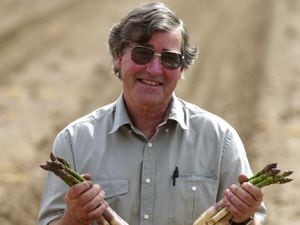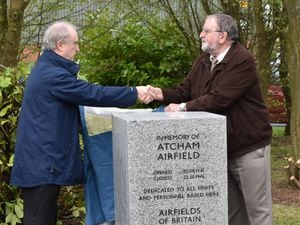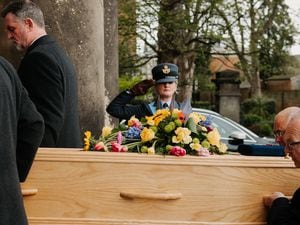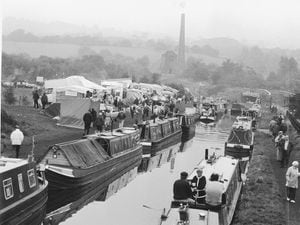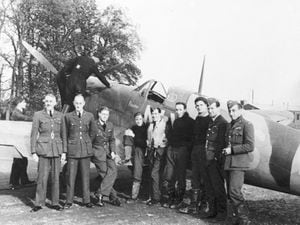Family air-loom: How Ludlow man rebuilt (and flew) his grandfather’s biplane
It is a remarkable story of a pioneering aviator at the very beginnings of war in the air.

And now one Ludlow man’s mission to recreate the biplane that his relative flew in the Great War is the subject of a new book.
David Bremner was clearing out his late grandfather Bunnie’s workshop when he came across aircraft parts from his Bristol Scout biplane.
David decided to rebuild the plane, incorporating the parts, and exactly 100 years on recreated a flight his grandfather had taken.
A new book now tells the story both of the rebuilding project and also Bunnie’s flying career. It describes how he was based at the aerodrome of Imbros, a small Greek island about 15 miles from the Dardenelles peninsula, in December 1915, and took part in a little-known air campaign in the eastern Mediterranean.

The aircraft parts that David came across were an aircraft control column, a rudder bar, and a magneto – the device that generated the spark for the engine.
It turned out that they were all mementoes from the actual Bristol Scout biplane, which Bunnie Bremner had flown in action.
Twenty years later, an extraordinary idea began to take hold. Why not build a faithful flying reproduction of Bunnie's Bristol Scout around those original parts?
David, together with his friend Theo Willford, started to do some research and by amazing strokes of good fortune were able to get their hands on detailed plans and a complete parts list.
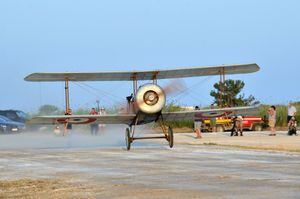
The triumphant conclusion came at Thassos, Greece, at dawn on June 23, 2016, when the reborn Bristol Scout with David at the controls took off from the same spot as his grandfather, holding the same control column and with his feet on the same rudder pedals, exactly 100 years since Bunnie had flown from there.
The remarkable story is now told by David in a new book called 'Bristol Scout 1264: Rebuilding Granddad's Aircraft,' published by Fonthill, which also weaves in the design process of the type by Frank Barnwell in 1913, and includes details of Bunnie's flying career.
"Along with my brother, Rick, I used to listen to granddad's stories about flying in the Great War and, although we did not understand them fully at the time, they must have caught our imaginations, because both Rick and I became, and have remained, fascinated with aviation ever since," said David.
"Of course, we asked granddad what type he flew, and he told us 'the Bristol Bullet.' At that time, without the internet, our primitive research, probably in I-Spy books, did not turn up the Bullet, and I am afraid we may have wondered how much of the rest of his stories were true.
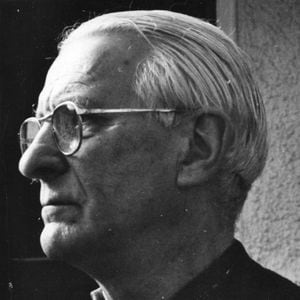
"It was only much later that we came across the Bristol Bullet as a nickname for the Bristol Scout, on account of its high speed when it was introduced.
"We did not find out the full details of his service until after he died in 1983. It was then, as we were clearing out his workshop after his death, that we came across the three items that set us on the long, long trail that led back to Thassos."
That control column, or joystick, together with the rudder bar and the Bosch magneto, had come from Bunnie's favourite mount, Bristol Scout Type C, Royal Naval Air Service serial 1264.
Francis Donald Holden Bremner, who was known as Bunnie because of the way he twitched his nose, was brought up in London, and after the outbreak of the Great War joined the navy, later switching to its flying arm, the RNAS.
He arrived at the aerodrome of Imbros, a small Greek island about 15 miles from the Dardenelles peninsula, in December 1915, and took part in a little-known air campaign in the eastern Mediterranean, regularly flying Bristol Scout 1264.
At the end of May 1916 he was part of a flight detached to Thassos, off the Greek coast. Bunnie was the first British pilot to land there successfully.
Coincide
Final assembly of the reproduction of Bunnie's aircraft was done at the small airstrip at Milson, near Cleobury Mortimer, and she first flew at Bicester airfield in June 2015, with test pilot Gene DeMarco, an experienced pilot of Great War aircraft, at the controls.
Then another idea which began as a daydream began to take shape – taking Bristol Scout 1264 to Thassos, where David's grandfather had once flown and fought.
The trip was timed to coincide with the local air show there in June 2016. Bunnie's logbook had shown he had last flown 1264 on June 9, 1916, after which she was sent for a complete refurbishment, and it is assumed that it is at that point that he "liberated" his souvenirs.
He continued to fly from Thassos, albeit in a different aircraft, before being invalided back to Britain at the end of July 1916 through a persistent sickness, and was never to return to combat flying.
He died in March 1983, a day short of his 90th birthday.
Unfortunately for David's 100th anniversary flight the weather was unfavourable, with the wind and turbulence meaning it was too risky to attempt anything more than a brief flight lasting little more than 10 minutes.
Airworthy
As for the fate of the original 1264, the evidence points to the aircraft being put on a merchant ship which was torpedoed and sunk. Although the plane was raised, it was beyond repair and written off.
Today the reproduction is the only airworthy Bristol Scout in the world.
"Since 2016 we have been kept extremely busy exhibiting 1264 all over the country," said David, a chartered mechanical engineer who is an experienced hang glider and microlight pilot and edited the Microlight Flying magazine for 15 years.
"I do regular air displays but because she can fit in a road trailer we mostly do static exhibits in towns all over the UK.
"In 2018 we have done no less than 20 shows, and we are starting to fill the calendar for 2019. But first she needs to have all her fabric replaced.
"After four years the original is completely worn out. So the engine is spending the winter at Milson and I'm currently in Dorset with Theo working on the airframe.
"We've spent a couple of weeks working on it so far, and I expect it will take another three to four weeks to complete before the season starts in April. I have to fit this in with my part time job which helps to cover the costs."

